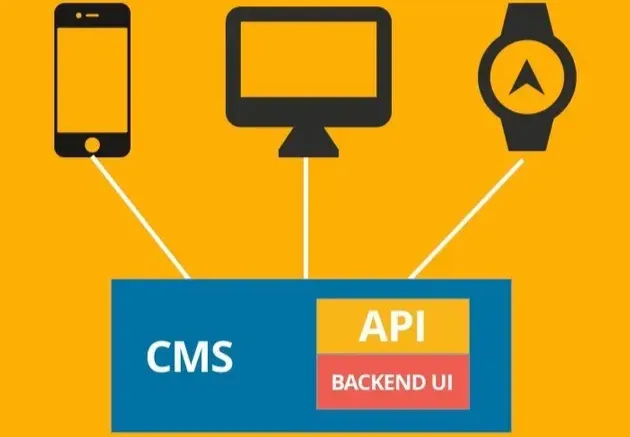CMS for SPAs: Are Single Page Applications and Headless CMS a Slam Dunk?

Russ Danner

From web-based applications like Gmail, Instagram, and Google Maps to websites like The New York Times and Facebook, real-world examples of Single Page Applications (SPA) are everywhere you look. Developers have been turning to SPA frameworks and architectures to create better, more usable, richer applications for their users.
Nearly every Content Management System (CMS) out there purports to support SPA frameworks and architectures. In this blog series, we’ll look at SPA use in the CMS space to learn more about what’s working, what’s not and what we can do about it. Let’s jump in.
SPAs are web-based applications built with rich UI frameworks that run client side and use partial page updates rather than full page refreshes to update data, content, and UI. SPAs have several advantages:
- Great user experience: SPAs make the user experience more fluid with rich UI interactions that leverage asynchronous calls to the server for data and partial page refreshes.
- Clean architecture: SPAs architecture promotes a clean separation of the frontend application and backend services and data. This approach makes development faster and more flexible.
- Great frameworks: There are a lot of great frameworks that make developing SPAs faster and easier including React, Angular, Vue and others.
In the CMS space, SPA applications have been a win for developers but content authors have taken a major hit.
Developers have been keen to adopt SPA technology and CMS vendors have quickly responded with support for Headless CMS (also known as Content as a Service [CaaS]) support.
This shift has been highly promoted by CMS vendors because it has a number of advantages with respect to content management. Returning content as JSON or other presentation-less formats makes content more reusable within and across delivery channels. More importantly, by removing the consuming application from the CMS, the approach seems to solve one of the major challenges in the CMS space: development. It’s no secret that most developers have little interest in working within the toolsets and constraints of a CMS. Developers want control over their tools, frameworks, and process. CMS platforms are notoriously framework laden and don’t integrate well with DevOps tools and process.
The headless approach completely and neatly decouples development and content production workflows. On the surface, the headless approach appears to be a perfect evolutionary step for CMS. New delivery channels and integration opportunities show up all the time. In a customer experience driven market, anything that aids development and reduces time to market is seen as a winner.
However, the reality is that decoupling the CMS from the consuming application does not solve long-standing challenges such as refreshing content in lower environments — in fact, it complicates them. Worse, complete decoupling creates new problems. While software development and content production workflows are best divorced, their products: the code and content are not. There is a time/version specific relationship between the data model, the content and the code at any given moment. To illustrate the point: it’s often not possible to “point” an older version of an application at a newer version of the content and vice versa. It’s extremely difficult to troubleshoot or perform legal and regulatory audits without this capability. Yet, with the clear benefits of better products, a cleaner deployment architecture and faster, easier development in mind, the remaining issues are either unrecognized or a compromise many developers are willing to take. For developers, the SPA and headless approach have largely been a win.
The ironic and unfortunate “dirty little secret” in the CMS space of late is that the biggest losers of the headless CMS movement have been the content authors, CMS’s main stakeholder.
Today’s headless CMS options have the following drawbacks for authors:
- There is no preview. Authors are used to in-context editing and preview. With headless, they are back to working in forms with no preview and are left to hope and a cumbersome process to ensure that the content will present properly.
- There is no personalization. Marketers want to be able to target and personalize their messaging to the audience. Most headless CMS platforms don’t give them the capability to describe and execute targeting rules much less test and preview the various scenarios.
- DevOps are still not supported: Despite investments in new technology, tools and process content authors see zero improvements in DevOps activities related to feature releases. Content freezes and outages are still commonplace during feature deployments with headless CMS.
It doesn’t have to be that way! With the right CMS architecture and platform content authors, developers and DevOps can work together on SPA based sites and applications at speed with the tools and processes they are accustomed to (like in-context editing) without stepping on each other’s toes.
A Better Approach to SPAs, CMS and DevOps
CrafterCMS is an open source CMS platform that takes a completely different approach to headless CMS, SPA development and DevOps. CrafterCMS has a very different architecture from traditional CMS platforms that are monolithic and rely on SQL databases and JCR repositories.
Crafter’s architecture is modular, flexible, and completely elastic with a repository and deployment design that is shared-nothing and based on Git. This architecture enables CrafterCMS the flexibility to support content authors, developers and DevOps to collaborate together to build and release new experiences with minimal friction while using the tools and workflows that work best for them.
CrafterCMS is an API first CMS that is:
- UI agnostic and can support development and editing and preview for any UI framework
- Capable of supporting rich, personalized headless CMS content
- Git-based to support your development frameworks, tools, and process in a way that separates development and content production workflows without needing to separate the deployable (code and content) artifacts.
Conclusion
SPA applications combined with decoupled, headless CMS offer significant advantages in terms of end-user experience, development, and deployment. However, it’s clear that headless is not a silver bullet. Completely divorcing the CMS and the consuming application or site creates significant challenges for DevOps, support and other departments. More importantly, the SPA/headless pairing has left authors out in the cold by taking away the process and tools they have become accustomed to over the past decade.
These shortcomings can be addressed with a new breed of CMS architecture. What’s needed is a flexible headless CMS that support proper authoring tools and process regardless of front-end technology. Moreover, we need a CMS that embraces and integrates development tools and process rather than shunning them. That’s exactly what we’ve set out to do with CrafterCMS. Stay tuned for our next blogs in this series where we’ll dive deeper into these concerns and their solutions.
What has your experience been working with SPAs and your CMS?
Related Posts

Websites Are Dead?

Mike Vertal

No-Code Experience Building for Marketers & Designers

Amanda Lee

Is Your CMS MACH-Ready? A Practical Guide for Enterprise Architects

Sara Williams

Composable DXP vs Traditional DXP: Why Enterprises Choose CrafterCMS

Amanda Jones
Related Resources
-

CrafterCMS at eBay: The Universal Content Platform for eBay.com
Webcast
-

Personalized Digital Experiences for a Cruise Liner
Webcast
-

Introducing CrafterCMS v4.0
Webcast
-

Modernizing Video Delivery and Content Management at CPAC, A Canadian Nationwide Broadcaster
Webcast
-

Building React Apps on a Headless CMS
White Paper





